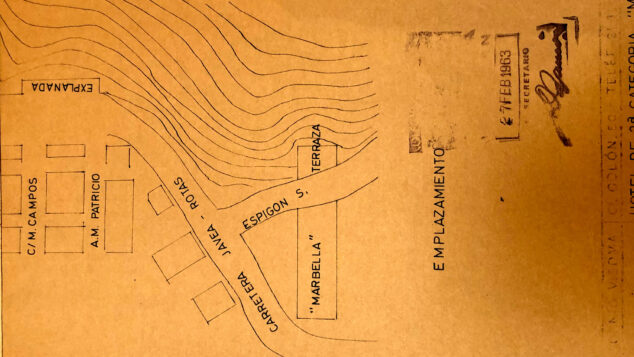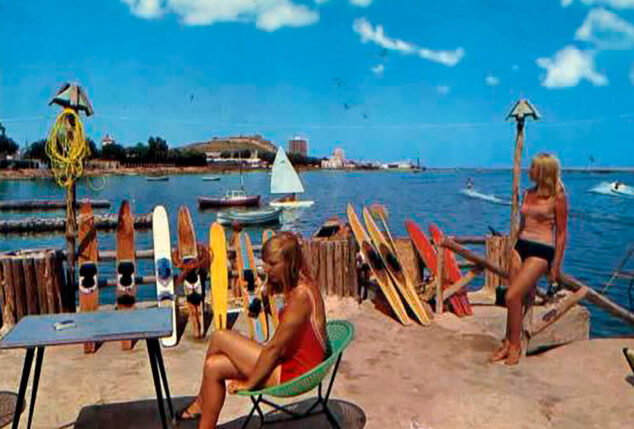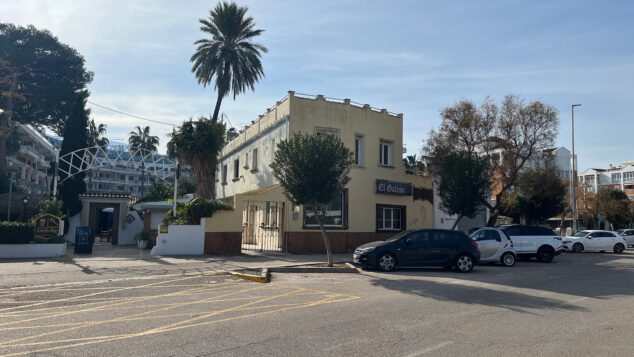They were the beginnings of tourism. When, in fact, this tourism was only a Dénia project that remained to be seen if it came to fruition. Everything indicated that this would be the case. Large nautical ports did not yet exist and there was more water than asphalt in the city. But the sea was a resource that from the beginning aspired to be exploited in order to attract tourists, and that was the main claim of one of the pioneering initiatives in this sense: the forgotten Mar-Bella hotel.
The Dénia of the 60s is far from today. Not even a century has passed but the transformation that it suffered during those decades resulted in a totally different city. In the 60s, the sea was more present. The port infrastructure was still very archaic and had barely been developed. Furthermore, the private nautical ports that exist today did not yet exist. So what was there? Well that's it, just water.
Many roads on the city's coastline, on which hundreds of vehicles circulate daily, did not exist, and in their place there was only the Mediterranean. Especially in the south of the urban center, since the last line of land was practically the Dénia highway to Xàbia.
It was there where José Martí Ivars decided to locate one of the first projects focused on a very specific type of client: the tourist looking for sun and beach. It would be called Hotel Mar-Bella and, although it started from an idea that is now successfully emulated in countless tourist destinations, its life was shorter than expected.
The hotel with doors to the sea
The Mar-Bella Hotel was a small project with enormous aspirations. He obtained the license in 1963 to be able to build a complex with 10 rooms with sea views. The person in charge of capturing Martí's idea was the architect Eugenio Viedma, designing a two-story building, with the guest rooms located upstairs and the base reserved for the kitchen, bar, social room, dining room... All the comforts. And outside, an outdoor recreation area where the main attraction of Mar-Bella was: a direct exit to the sea.
Today, the lot where it was located is many meters from the water. In front there is a road, which leads to the roundabout of the marina Marina de Denia, and also a wide parking lot and the entire esplanade of the previously non-existent Real Club Náutico. But then there was only water and a small pontoon, like a terrace, that they built for the enjoyment of tourists.
Premature death at the gates of the tourist boom
The situation was "magnificent", in the words of a suitor who a couple of years later proposed its acquisition to demolish it and put an end to the Mar-Bella forever. Yes, it had everything to succeed, being one of the first projects that sought our current tourist by offering them a direct door to the sea. He was not a front line, he was much more. Its terrace was in contact with the water. But it was not enough.
Its demolition was requested and in its place it was planned to build a block with eight floors in addition to the ground floor, instead of just two. A building intended for housing, as they now rise around it. "A worthy work for the city," they promised. The hotel disappeared not long after and the building took a new direction, far removed from the project that its first promoter had in mind. And also, nowadays, much further away from the sea.













And if I'm not mistaken, it ended up being, for a few years, the bar "El Galeón" run by some English people.
Fascinating story, thank you very much.
Fascinating story. Thank you so much.